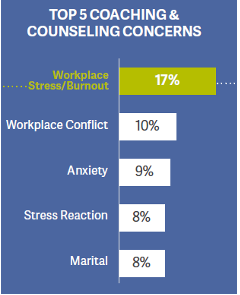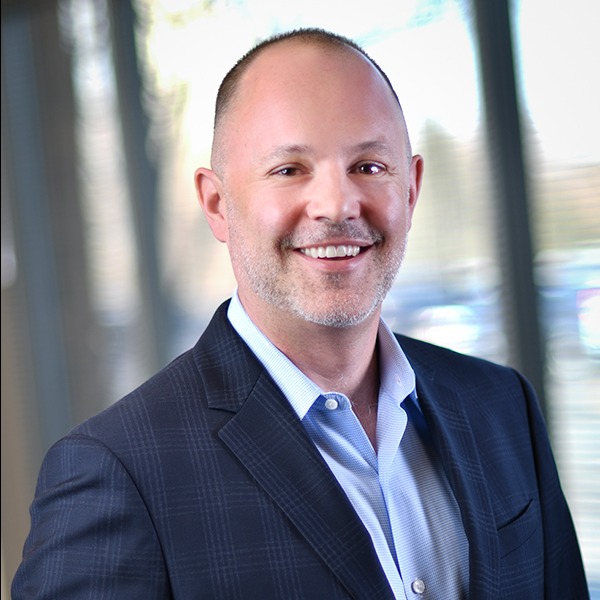The events of 2020 have added unprecedented stress on healthcare organizations and workers. As a leader, you know the most important resources in your organization are its people—the physicians, advanced practitioners, residents, nurses and other healthcare workers who show up on the frontlines every day. Clinicians have been faced with situations that consistently test their training, stamina and mental and emotional health.
As a national behavioral health consulting practice with a large healthcare client base, we feel it is important to share the trends we saw in the industry. A look back at 2020 shows how our healthcare clients have engaged with our Physician Well Being Resources to help support their needs during the most challenging of times.
Top Industry Stats in Healthcare
- According to the Henry J Kaiser Family Foundation[i], during the pandemic, about 4 in 10 adults in the U.S. have reported symptoms of anxiety or depressive disorder, a share that has been largely consistent, up from 1 in 10 adults who reported these symptoms in 2019.
- Across our healthcare client base, we saw total case engagement, defined as contacts to VITAL WorkLife to access our resources, increase year-over-year from 22% in 2019 to 37% in 2020.
Note: Engagement was significantly down in the spring of 2020 with clinicians being immersed in the first wave of the pandemic. In May, there was a large increase in mental health and well being assessments accessed as well as requests for support which has continued at an increased pace ever since. - We saw practice challenges increase in 2020 with Workplace Stress and Burnout rising to 17% of all coaching and counseling cases.
This is not surprising considering the already-high levels of stress and burnout that existed prior to 2020, and the increased pressures since then, both professionally and personally.
Top Areas of Concern for Physicians and Leaders
Now more than ever, leaders and clinicians appreciate the opportunity to talk with a peer about the difficult situations and feelings they experienced in the past year. The result was an increase in organizational and leadership consultations to support medical staff leaders, clinicians and employees in 2020. The most common areas of concern discussed were:
- Frontline clinicians trying to sustain a thread of their own well being while giving everything they had to their patients.
- Clinicians struggling with the difficult choice of leaving medicine all together.
- Clinicians experiencing extreme anxiety about transmitting the virus to their family members.
Peer Coaching: An Effective Resource
A growing body of evidence from sources across the country supports the effectiveness of peer coaching for improving physician well being. Engagement in VITAL WorkLife’s peer coaching resource increased by 42% in 2020. Our peer coaching model has demonstrated a 58% improvement in well being scores from pre- to post coaching engagement[ii]. Physician and provider participants in our pre-and post-coaching survey identified the top 3 most-valued benefits of peer coaching as[iii]:
- Improved Self Awareness
- Improved Confidence
- Improved Validation
To learn more about the efficacy of peer coaching and dig into more of our data from clinicians who used our peer coaching resource, download our white paper:
Of those physicians and providers who engaged in our coaching and counseling resources and responded to our Intake & Well Being Assessment Survey, we found over half of respondents (51%) would have done nothing to support their well being if VITAL WorkLife resources had not been available to them. Given the high cost of physicians turnover, ranging from $500,000 to $1M, the negative impact of a distressed physicians on a culture of safety, and the implications on patient satisfaction, the investment in the health and well being of your care teams is well worth making.
Best Practices from Healthcare Organizations
Our clients who had the best overall user engagement in 2020 have implemented these best practices recommended by VITAL WorkLife:
- Identified and trained individuals to be a big part of their organization’s well being plans. These individuals act as internal well being advocates for their VITAL WorkLife solution and assist with heightening program awareness. This is a “game changer” for clinicians when someone they trust talks with them and about taking care of their own well being.
- The organization consistently highlighted VITAL WorkLife resources at department and team meetings to encourage engagement by clinicians. Consistent internal communication from leaders about the solutions (and even better, about their experience using the solution) is always impactful in improving the culture (many trained by VITAL WorkLife, see above #1).
- Engaged with an experienced VITAL WorkLife consultant to conduct a solution overview with their leadership team, Well Being/Wellness Committee and recruitment teams to help utilize our resources for the maximum benefit of the organization.
- Leveraged their intranet as a “one-stop shop” for well being resources with a connection to VITAL WorkLife’s member resources to ensure all the links, content, videos and trainings are easy to find and accessible to physicians and/or the entire care team.
- Conducted direct communications to physicians and their families about the resources available to them which included a personal letter from their leadership team using turnkey collateral from VITAL WorkLife.
The Greatest Challenge
Looking forward, one of the greatest challenges for healthcare organizations in 2021 will be the physical and emotional exhaustion of their workforce[iv]. Therefore, be aware that your care teams may struggle with issues such as PTSD, moral injury, compassion fatigue, second victim syndrome, mental health concerns and need to be equipped with skills for coping with fatigue. Our experience in supporting clinicians suggests the lasting effects of the pandemic will take years to recover and will require organizations to proactively have programs in place to foster healthier cultures.
We Can Help
Contact us to learn more about our proactive healthcare-specific solutions and how they can support the well being of your physicians and providers.
Sources:[i] Panchal N, Kamal R, Cox C, (2021), The Implications of COVID-19 for Mental Health and Substance Use. https://www.kff.org/coronavirus-covid-19/issue-brief/the-implications-of-covid-19-for-mental-health-and-substance-use/
[ii] Ferron, L, Shannon, DW. Peer Coaching Impacts on Physician Well Being. VITAL WorkLife. 2021.
[iii] Ferron, L, Shannon, DW. Peer Coaching Impacts on Physician Well Being. VITAL WorkLife. 2021.
[iv] Radin J., Abrams K., (2020) Deloitte Consulting LLP, Caring for caregivers: Using workforce strategy levers to support mental well-being. https://www2.deloitte.com/content/dam/Deloitte/us/Documents/life-sciences-health-care/caring-for-caregivers-pov.pdf




